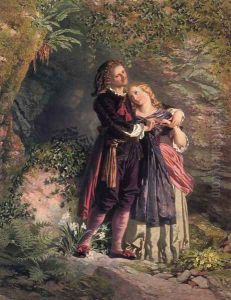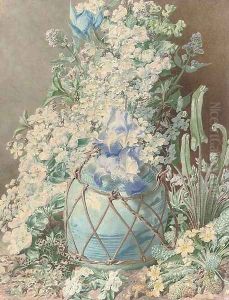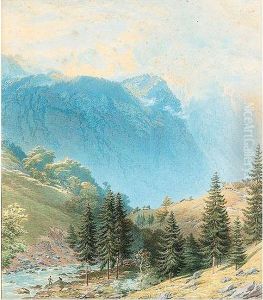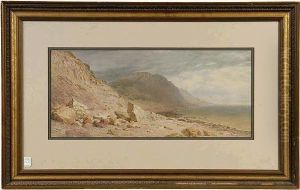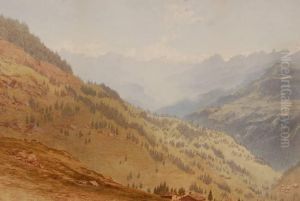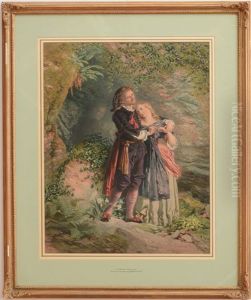Henry Anelay Paintings
Henry Anelay was a 19th-century British artist known for his work as an illustrator and watercolor painter. Born in 1823, Anelay had a career that reflected the vibrant Victorian art scene, which was rich with innovation and the exploration of new styles and subjects. While he may not be as widely recognized as some of his contemporaries, his work provides insight into the period's aesthetics and cultural values.
Anelay received his artistic training during a time when the Royal Academy of Arts was a pivotal institution in London, shaping many British artists' education and careers. Although not much is documented about his early life and training, it is known that Anelay developed a keen interest in historical and genre scenes, which became a dominant feature of his artistic output. His illustrations often depicted scenes from history, literature, and everyday life with a focus on accuracy and detail.
Throughout his career, Anelay contributed illustrations to various publications, including books and periodicals. His illustrations were often engraved and published in popular Victorian magazines, which played a crucial role in disseminating art to the public. Illustration work was a common way for artists to support themselves during this period, and Anelay's detailed and narrative-driven style was well-suited to the medium.
Henry Anelay was also known for his watercolor paintings. As a watercolorist, he was part of a tradition that became increasingly esteemed in Britain during the 19th century. The medium allowed for quicker work and portability, appealing to artists who were interested in capturing landscapes and scenes from life with spontaneity and a sense of immediacy.
Despite his contributions to Victorian art, Anelay did not achieve the same level of fame as some of his peers. The Victorian era was a time of great artistic personalities, and the competition for recognition was fierce. Still, his work provides a valuable glimpse into the visual culture of the time, and his illustrations remain a testament to the skill and craftsmanship of 19th-century British illustrators.
Henry Anelay passed away in 1883, leaving behind a body of work that, while perhaps not as celebrated as that of some of his contemporaries, offers a window into the past and the rich tapestry of Victorian society and its art. As an art historian, one can appreciate Anelay's technical skill and the role he played in the broader context of Victorian visual culture.
